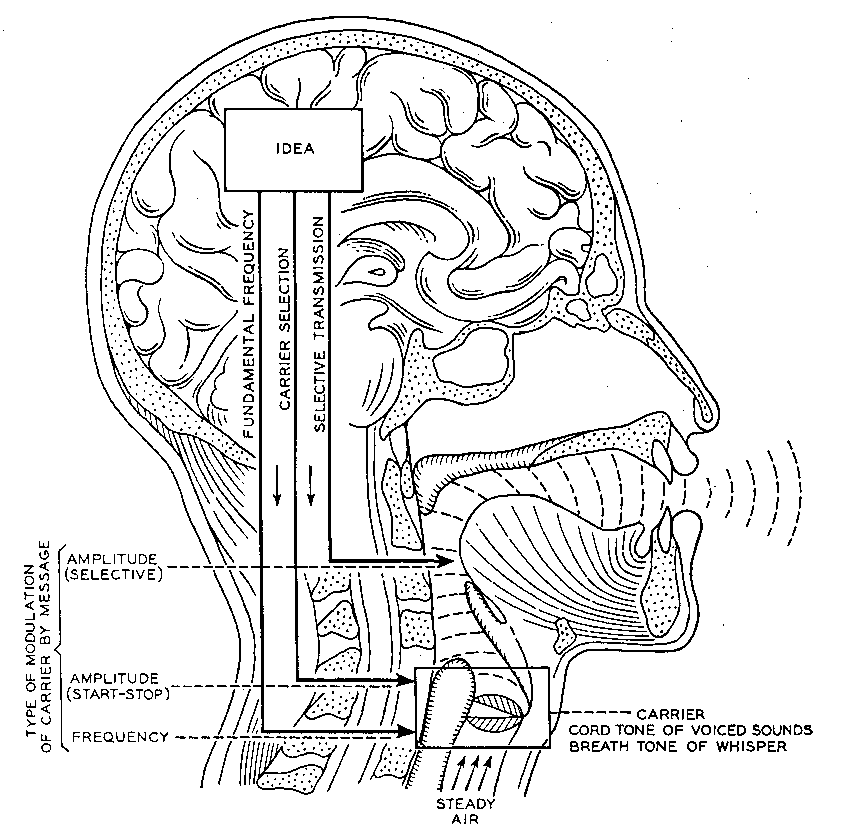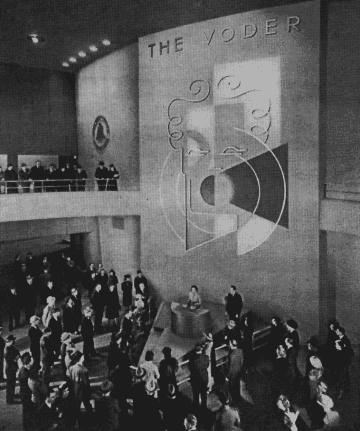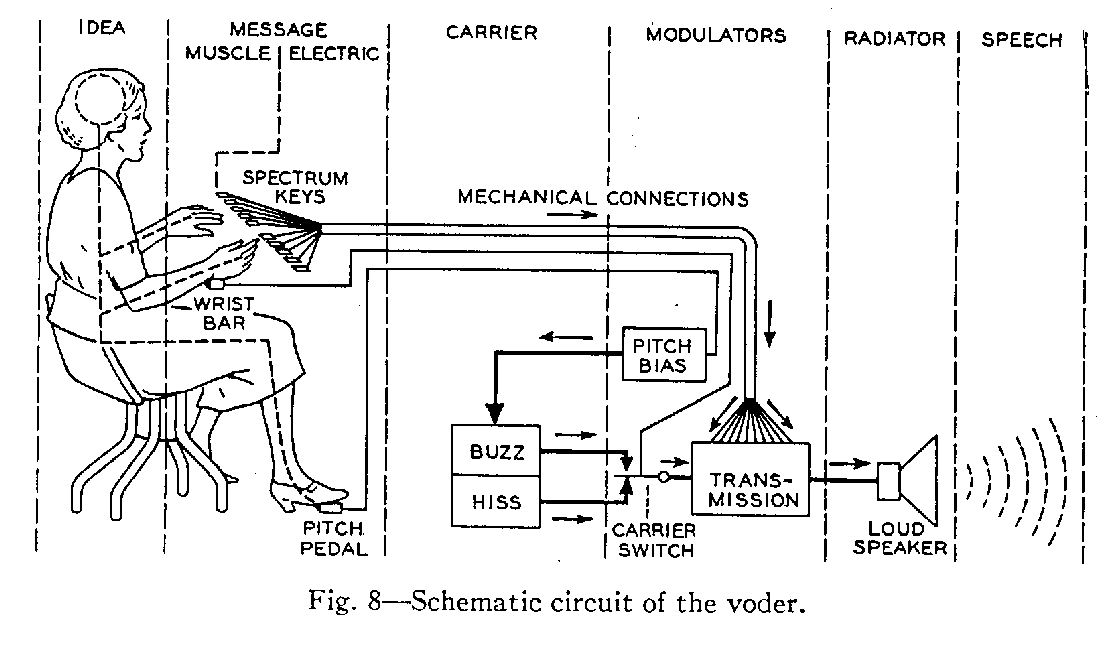The technology of speech processing, which includes speech modeling,
synthesis, encoding, and recognition, dates back to the parametric
techniques introduced by Homer Dudley in the late 1930's and early
1940's. These methods are "parametric" in the sense that they
construct a model of the acoustic properties of the human vocal tract,
and then analyze speech by determining the values of the parameters
of the model. Below is a rendition of the basic model
from Dudley's 1940 paper, "The Carrier Nature of Speech,"
published in the The Bell System Technical Journal.

At the 1939 World's Fair in New York, Bell Labs demonstrated
this principle with a device called the "Voder," shown below in action.

The voder is operated by highly trained technicians (who at the
time were called "girls"). A technician would manipulate
a set of analog (continuous) controls that produced speech
like sounds, as in the sentence "greetings everybody":
The voder is carefully designed to match the limitations of the human
operator to the needs for modeling speech. It is shown in the
following schematic:
 Ten "spectrum keys" control
the gains of ten bandpass filters (because there are ten fingers).
This crudely determines
the spectral content of the speech signal (note that a normal
human operator can only control at most ten keys at once).
A wrist bar switches
between a periodic excitation ("buzz-type energy") and
a white-noise excitation ("hiss-type energy").
Periodic excitation is used to produce voiced sounds (like "aaaaa")
while white-noise excitation is used to produce unvoiced sounds
(like "sssss").
A foot pedal controls the frequency of the periodic
excitation, which can thereby control inflection.
Ten "spectrum keys" control
the gains of ten bandpass filters (because there are ten fingers).
This crudely determines
the spectral content of the speech signal (note that a normal
human operator can only control at most ten keys at once).
A wrist bar switches
between a periodic excitation ("buzz-type energy") and
a white-noise excitation ("hiss-type energy").
Periodic excitation is used to produce voiced sounds (like "aaaaa")
while white-noise excitation is used to produce unvoiced sounds
(like "sssss").
A foot pedal controls the frequency of the periodic
excitation, which can thereby control inflection.
Listen to the complete Voder demonstration:
